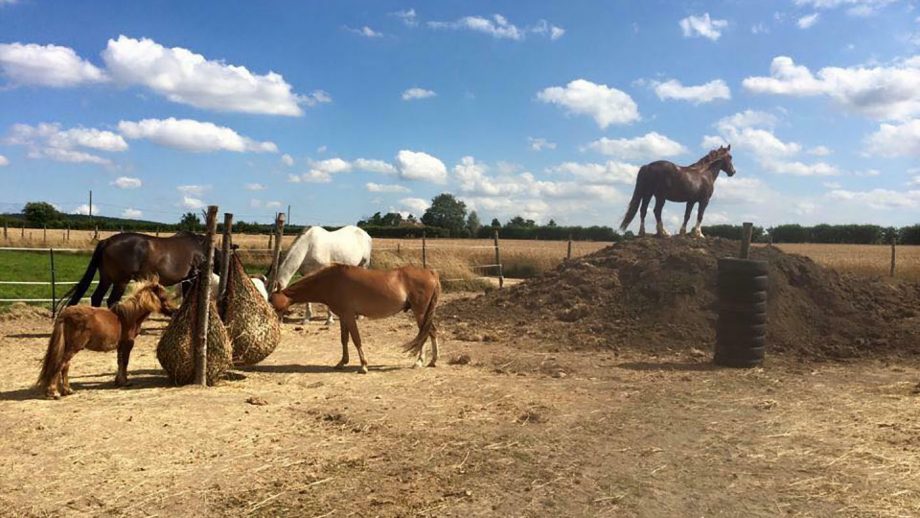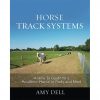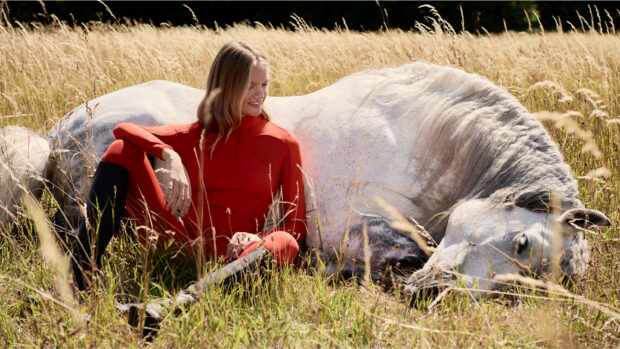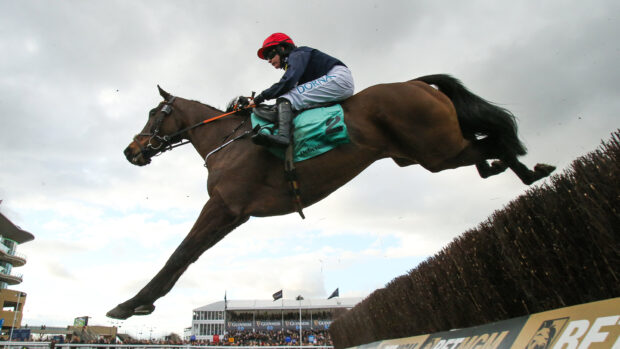Rachel Fraser discovers the benefits of keeping horses on tracks and how to make changes to your set-up without breaking the bank
On a mission to help my horses reach — and stay at — a healthy weight, I came across the ‘Paddock Paradise’ or track system of keeping horses.
The (very) basic principle is to have a track — usually running around the perimeter of a field — with water, hay and supplements distributed at different points along it to ensure horses are motivated to keep moving.
Tracks can include a variety of surfaces, such as hardcore or woodchip, as well as obstacles, small logs for example, for horses to negotiate. Some tracks are entirely grass-free, but hay is usually provided ad-lib so the horse can learn to self-regulate its intake.
A wider area should also be provided along the track for the horses to gather, socialise and lie down.
How tracks can help equine weight loss
Track living has helped Charmaine Walker’s pony (pictured below) lose weight.
She explains: “It had been something I’d been experimenting with for a long time and a few months ago I was lucky enough to be offered my own yard to rent. The landowner is fantastic and was happy for me to have the track.

“I think attitudes towards tracks are changing and the system is gaining traction. It does take some time for those with more traditional set-ups to adjust, but honestly I have seen such a change with my two, I would be sad to go back to full paddock turnout.”
A livery yard using a track system
Lauren, who runs Graveney Equine as a track livery, explains how she came across this alternative horsey set-up: “I originally looked to a track system to help rehabilitate my horse’s hooves. She was only a youngster and had hoof cracks and seedy toe on all four feet when I took her on.
“I stumbled across the concept of barefoot trimming and the trimmer mentioned Paddock Paradise systems, we trialled it with my own horse. It took three months for her feet to be fully recovered and I had seen so many benefits to her temperament that I was so excited to see what else this set-up could achieve.
“We opened Graveney Equine in 2014 when we bought a house with its own land and setting up a track system as opposed to a generic paddock arrangement was a no brainer to me by this point.
“We now have a track of 1km that, after some extension work this summer, will be even longer. We currently have 15 horses but with demand being so high, our improvements will see us creating space for more.
“We have seen some incredible rehabilitation through this system. People often concentrate their focus on hoof health and weight loss but we have dealt with a couple of very challenging behavioural cases and a severe neglect case too.
“Our track system has thrived because it allows horses to be horses. Every time a horse is asked to live outside of its comfort zone of having ‘friends, forage and freedom’, we are putting stress on their system.
“To provide a much more species-appropriate way of living means that our horses can have their physiological and psychological needs met and stand much more chance of being fit mentally and physically.
“The other thing I love about these systems is that the sky is the limit. They develop, morph, adapt and grow as you experiment with what works and what needs improving. To be able to observe behaviour and use those observations to inform your future developments really ignites the perfectionist in me!”
How to set-up a track system without breaking the bank
Grass tracks are a good place to start — surfacing can be expensive or require planning and landowner permission, but a grass track can be set up relatively easily with temporary electric fencing.
Use what you have — if you have hedgerows with horse-friendly plants, incorporate these into your track to offer natural variety to your horse’s diet. Similarly, if your field has a shelter – natural or man-made – make sure your horse can access these on the track.
Obstacles — these can be a fun addition that needn’t cost the earth. If you have branches to cut-down, these can make log poles for your horse to walk or trot over — just make sure there’s a way around the edge if any members of the herd would struggle with polework.
Start small — as Lauren said, the possibilities for tracks to grow and develop over time are endless, so don’t worry about having the ‘perfect’ track from the word go — you can always add to it when you see what works well for your horses.
Do your research — for anyone interested in this alternative style of horse-keeping, ‘Paddock Paradise: A Guide to Natural Horse Boarding’ by Jaime Jackson is a must-read. There are also some very helpful track system groups on Facebook to swap suggestions and share advice with fellow ‘trackies’.
Further reading
You might also like:

Electric fencing for horses – everything you need for a temporary setup or strip-grazing

Electric fence energisers for every setup

Grazing muzzles – what are your options?

The best ways to safely deal with ragwort

Are buttercups poisonous to horses? We ask the experts…

Subscribe to Horse & Hound magazine today – and enjoy unlimited website access all year round
Horse & Hound magazine, out every Thursday, is packed with all the latest news and reports, as well as interviews, specials, nostalgia, vet and training advice. Find how you can enjoy the magazine delivered to your door every week, plus options to upgrade your subscription to access our online service that brings you breaking news and reports as well as other benefits.






